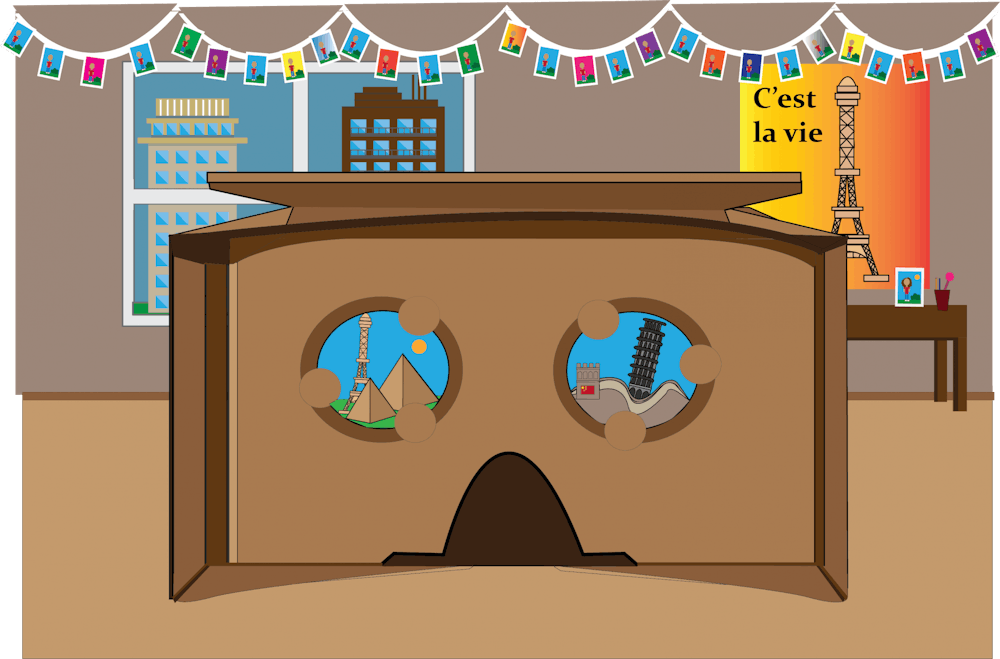To ensure students still have the opportunity for an international education, USC’s Global Carolina Office has worked to create a virtual, internationalized program called Global Learning Experiences (GLEs).
"I kind of view all of this as travel of the mind, right now," Magdalena Grudzinski-Hall, the director of the Education Abroad Office (EAO), said. "If we physically can't travel, how do we bring the world to our room, to our office, to our space?"
The pilot course for this new program took place in Italy this past May. It was a partnership with the College of Hospitality, Retail and Sport Management.
The course was led by Sandy Strick, the director of the Wine and Beverage Institute, and Karen Edwards, a senior instructor in the Department of Retailing, both of whom have been teaching courses abroad for several years now.
“We wanted to replicate as closely as we could the real program, which we’re really proud of,” Edwards said. “It’s a really rich program that we’ve perfected over the years.”
Before the course began, the EAO hosted Pre-Departure Workshops, which included reflective exercises and other tools students could utilize to make the most of their virtual experiences.
Some of the experiences for this course included an Italian chef speaker who gave cooking tips, a 360-degree virtual tour of the Sistine Chapel and even a video that took students through the airport terminal in Rome.
Similar to more traditional courses through the Global Classroom Program, Strick and Edwards maintained a daily itinerary for students as if they were physically in Italy. They also required students to have a virtual "buddy" throughout the course.
Edwards said she has seen "incredible personal growth" in her students after their education abroad experience. To document this growth, Strick said they have students keep journals they can use to reflect back on their experience.
"There’s a good amount of research behind all the good things that an experience within a culture other than your own does for you as a human being, and as a person, and as a learner and as a lifelong learner," Edwards said.
To achieve this international experience, Strick and Edwards utilized materials such as cardboard headsets provided by Distributed Learning, which allow for 360-degree viewing.
Edwards said she recognized this “is not the full experience,” but they had worked to build in as “many authentic experiences as possible.”
GLEs will vary in nature from program to program, but they will always be faculty-led, according to Jenna Rees-White, the coordinator for Global Collaborations. Faculty will take their syllabus for a preexisting course, then work with the EAO to convert it into a GLE.
“It’s also just a creative way for faculty to play around with their course. I love to give faculty opportunities to teach what they want,” Rees-White said.
According to Rees-White, one of the key challenges with creating GLEs was designing them in a way that met the Graduation with Leadership Distinction in Global Learning requirements. To do this, Rees-White worked with the Center for Integrative and Experiential Learning to put together the requirements for the program.
“These experiences are still very hands-on, and I wanted that to be reflected in the programming,” Rees-White said.
While the pilot course only cost tuition with no additional fees, students who participate in GLEs in the future will pay the study abroad fee, which is $150. The costs for typical Global Classroom courses range between $1,000 and $5,000.
"I do think that — for our students who might experience all the definitions of accessibility issues — that this becomes an opportunity for them," Grudzinski-Hall said.
GLEs aren’t a temporary program. Grudzinski-Hall said she sees GLEs playing a large role in the future of international education.
"At the end of the day, we are looking to advance the development of our students' knowledge, skills, sometimes even language — foreign language experience — in an international setting," Grudzinski-Hall said.

